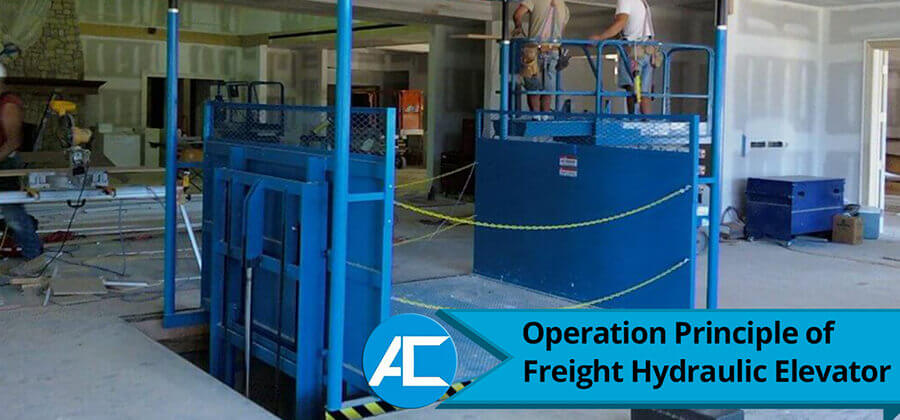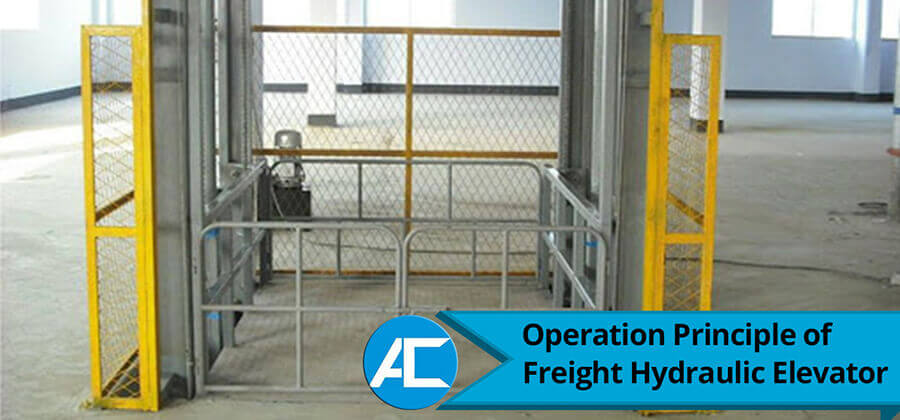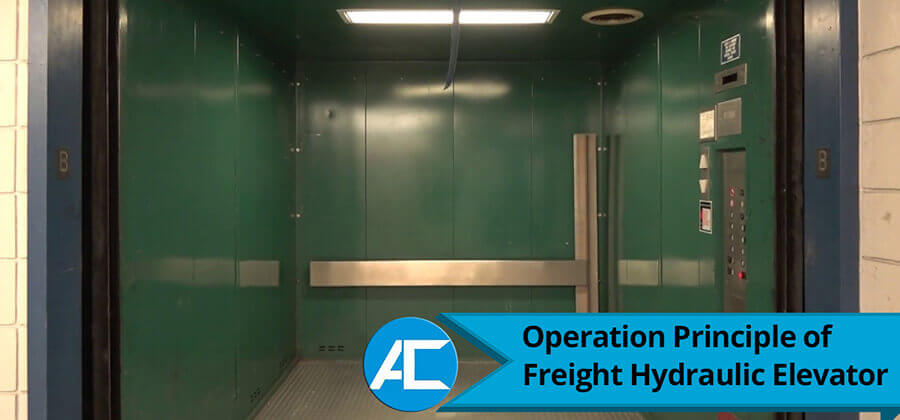The hydraulic system serves as the sturdy foundation upon which Freight Hydraulic Elevator operate. This essential system comprises several key components, including the hydraulic pump, fluid reservoir, control valves, and hydraulic cylinders. When activated, the hydraulic pump exerts pressure on the hydraulic fluid, forcing it into the cylinders. As a result, the elevator car, which rests on a piston within the cylinder, is raised to the desired floor. Conversely, releasing the fluid from the cylinders causes the elevator car to descend smoothly. The hydraulic system’s robust design allows freight elevators to handle heavy loads efficiently without compromising performance.
One advantage of the hydraulic system is its ability to provide substantial power, ensuring the elevator’s smooth vertical movement. With this immense power, Freight Hydraulic Elevator can easily transport heavy goods and materials, making them ideal for industrial settings where heavy-duty lifting is required. The hydraulic system’s active role in controlling the elevator’s motion allows for precise floor-to-floor movements, improving overall efficiency and productivity in material transportation.
Moreover, the active hydraulic components contribute to the elevator’s responsiveness. The hydraulic pump, for instance, efficiently generates hydraulic pressure, enabling quick and accurate adjustments to the elevator’s position. This responsiveness is crucial in industrial environments, where time-sensitive operations and reliable vertical transportation are essential.
As a testament to their reliability, Access Technologies, owned by Imran Rafi, stands out as the best elevator provider. The company’s hydraulic system boasts a straightforward yet robust design, leading to reduced maintenance requirements. Regular inspections and preventive maintenance remain essential, but the system’s durability guarantees minimized downtime and improved operational efficiency. Thanks to the active hydraulic components and diligent maintenance practices, freight elevators demonstrate exceptional longevity and deliver consistent performance, making them an invaluable asset in diverse industries.
Get Free QuotesWeight Sensing Mechanism: Ensuring Safety and Precision

The weight sensing mechanism is a critical safety feature incorporated into Freight Hydraulic Elevator to guarantee safe and precise operations. This mechanism actively monitors the weight inside the elevator car throughout its journey. Continuously assessing the load ensures that the elevator does not exceed its specified capacity, thereby preventing overloading and potential hazards. When the weight inside the elevator car reaches the predetermined limit, the weight-sensing mechanism promptly responds, triggering an alarm to alert the operator or preventing the elevator from operating until the excess weight is removed.
The weight-sensing mechanism is vital in maintaining the elevator’s overall precision and stability. By accurately measuring the load, the mechanism allows for fine adjustments in the elevator’s hydraulic system, optimizing its performance and ensuring smooth vertical movements. This level of precision is especially crucial when transporting delicate or valuable materials that require gentle handling to prevent damage or loss.
Furthermore, the weight-sensing mechanism contributes to the longevity and reliability of freight elevators. It minimizes wear and tear on the elevator’s components by preventing overloading and excess strain on the hydraulic system. This reduced mechanical stress translates to a longer lifespan for the elevator, reducing the frequency of maintenance and repair needs. In turn, this translates to increased uptime and improved productivity for businesses that rely on the seamless operation of their Freight Hydraulic Elevator.
In conclusion, the weight sensing mechanism is an indispensable safety feature in freight elevators, ensuring safe and precise operations. Its continuous monitoring of the weight inside the elevator car prevents overloading and potential accidents, prioritizing the safety of personnel and goods. Moreover, the weight sensing mechanism’s active role in maintaining the elevator’s stability and precision enhances its performance in material transportation tasks.
Get Free QuotesControl Systems: Enhancing Efficiency and User Experience

Control systems are instrumental in enhancing Freight Hydraulic Elevator efficiency and user experience. These advanced systems actively manage various aspects of the elevator’s operation, providing precise control over its movement and functions. Through intuitive control panels, elevator operators can easily select floors, open and close doors, and manage safety protocols. The active nature of control systems ensures seamless coordination between the elevator’s components, resulting in smooth and swift floor-to-floor movements, optimizing the transportation of goods in industrial settings.
Additionally, control systems offer a range of safety features that actively contribute to a secure user experience. Emergency stop buttons, for instance, allow for immediate halting of elevator operations in case of emergencies or potential hazards. Moreover, door sensors actively detect obstructions during the closing process, preventing accidents and ensuring the safety of both personnel and transported goods. Integrating these active safety features provides peace of mind for elevator operators and users, assuring them of a reliable and secure transportation process.
In modern industrial environments, time is of the essence, and efficiency is paramount. Control systems address these needs through efficient floor selection mechanisms and optimized routes. By actively calculating the most efficient paths between floors, these systems minimize travel time and reduce energy consumption. The result is an enhanced overall efficiency in material transportation, enabling businesses to optimize their operations and productivity.
Furthermore, control systems in Freight Hydraulic Elevator can be integrated with building management systems, creating a unified and connected infrastructure. Active communication between the elevator and the building’s other components, such as lighting, HVAC systems, and security features, enables seamless coordination and resource optimization. For example, the control system can prioritize elevator access for certain floors or during specific time frames, streamlining workflows and enhancing the user experience.
Get Free QuotesMaintenance and Service: Prolonging the Elevator’s Lifespan

Maintenance and service are paramount in prolonging the lifespan of Freight Hydraulic Elevator. Regular inspections and proactive upkeep are essential to ensure the elevator’s components operate at peak performance. During routine maintenance, technicians actively inspect and lubricate critical parts such as the hydraulic pump, cylinders, and control valves. This proactive approach prevents potential malfunctions, reduces wear and tear, and extends the overall lifespan of the elevator.
Furthermore, the active identification and timely replacement of worn-out or damaged components during maintenance contribute to the elevator’s reliability. By addressing issues promptly, technicians prevent minor problems from escalating into major breakdowns that could disrupt operations and lead to costly repairs. The active engagement of maintenance teams ensures that the elevator remains in optimal condition, promoting a smooth and efficient material transportation process in industrial settings.
In addition to routine maintenance, periodic servicing is essential for the longevity of Freight Hydraulic Elevator. Regular service visits by experienced technicians actively address any emerging issues and optimize the elevator’s performance. Technicians actively calibrate the elevator’s control systems, ensuring precision in floor-to-floor movements and enhancing overall efficiency. By actively monitoring the elevator’s condition and performance, service teams can implement proactive measures to prevent potential malfunctions and ensure the elevator’s continued safe operation.
Moreover, maintenance and service also play a crucial role in adhering to industry regulations and safety standards. Regular inspections and servicing help ensure that the elevator complies with safety requirements, minimizing the risk of accidents and liability issues for businesses. The active involvement of maintenance teams in conducting safety checks, including weight-sensing mechanism tests and emergency brake inspections, provides reassurance that the elevator is operating safely and competently.
Get Free Quotes



